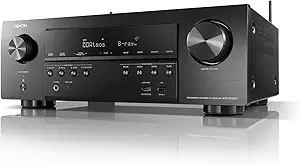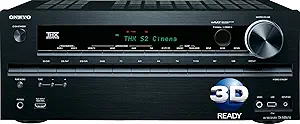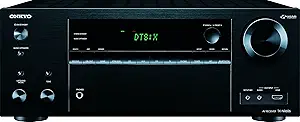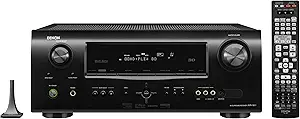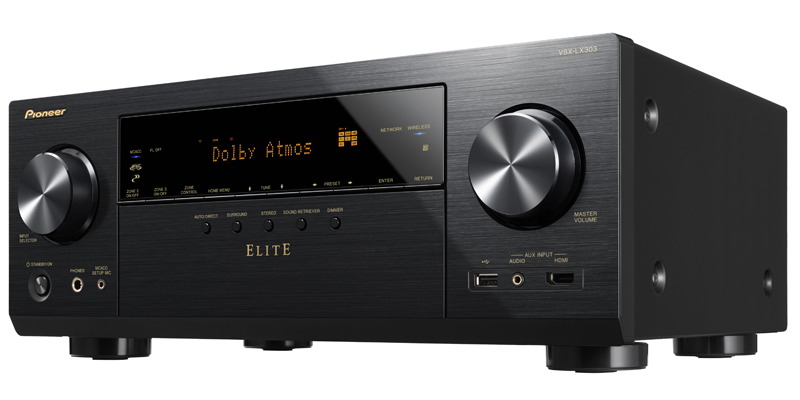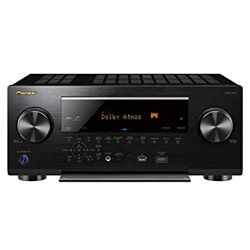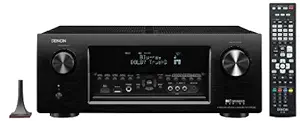Pioneer VSX-1131 VS
Onkyo TX-NR676

- Brand - Pioneer
- Updated_at - 2023-12-18 19:07:23
- USB - 1

- Brand - Onkyo
- Updated_at - 2024-02-02 04:44:03
- USB - 1
Pros & Cons
Pioneer VSX-1131
VSPros
- Many parameters to adjust make this receiver flexible and versatile.
- The on-screen menu is user-friendly, you can easily find what you need.
- The initial calibration process is very easy and it is precise.
Cons
- Some customers claim that the device becomes very hot.
- You can get some noise when you use the phono input port.
Onkyo TX-NR676
VSPros
- All the inputs and outputs work great.
- The receiver doesn’t overheat even during a long working day.
- There is a dual-zone capability, which lets you use this receiver in two different rooms simultaneously.
Cons
- There is some clicking noise that comes out the receiver.
- It is hard to find the sleep timer. It would be great to have the relevant button on the remote controller.
Specifications
Groups
| Specification | Pioneer VSX-1131 | Onkyo TX-NR676 |
|---|---|---|
| Built-in Decoders | ||
| Dolby True Hd | ||
| Dolby Surround | ||
| Dolby Digital Plus | ||
| Dolby Atmos | ||
| Dts:x | ||
| Signal Processing | ||
| Video Conversion/scaling | HDMI to HDMI scaling | |
| Hdmi Pass-through | up to 4K | up to 4K |
| Upscaling Via Hdmi | up to 4K | |
| 3d Pass-through | ||
| Connector Type | ||
| Optical Digital Outputs | has not | has not |
| Hdmi Outputs | 2 | 2 |
| Hdmi Inputs | 7 | 7 |
| Coaxial Digital Inputs | 1 | 1 |
| Optical Digital Inputs | 2 | 2 |
| Phones | 1 | 1 |
| Av Inputs | 3 | 2 |
| Usb | 1 | 1 |
| Subwoofer Outputs | 2 | 2 |
| Coaxial Digital Outputs | has not | has not |
| Radio | ||
| Tuner Type | digital | digital |
| Preset Station | 40 | 40 |
| Tuner Bands | AM/FM | AM/FM |
| Additional Features | ||
| Bi-amplifying | ||
| Audio Return Channel (arc) | ||
| Apple Air-play Support | ||
| Advanced Sound Retriever (asr) Technology | ||
| Three-zone Capability | ||
| Smartphone Remote Control | ||
| A-b Speaker Switch | ||
| Dual-zone Capability | ||
| Pure Direct Mode | ||
| Auto Power Off | ||
| Amplifier | ||
| Frequency Response | 10 Hz-100 kHz | 20 Hz-20 kHz |
| Output Impedance Per Channel | 6 Ohm, 8 Ohm | 4 Ohm |
| Output Power Per Channel | 100 W, 170 W | 100 W |
| Total Output Power | 160 W | 700 |
| Total Harmonic Distortion | 0.08 % | 0.08 % |
| Sound Features | ||
| Digital Content Protection | HDCP 2.2 | HDCP 2.2 |
| Surround System Class | 7.2 channel | 7.2 channel |
| Surround Sound Effects | Front Stage Surround Advance | Theater-Dimensional Virtual Surround |
| Audio D/a Converter | 32bit / 384kHz | 32bit / 192kHz |
| Audio Formats | ||
| Flac | ||
| Apple Lossless | ||
| Aiff | ||
| Aac | ||
| Wma | ||
| Wav | ||
| Mp3 | ||
| Media Content Source | ||
| Usb-host | ||
| Network | ||
| Bluetooth | ||
| Connectivity Interfaces | ||
| Ieee 802.3u | ||
| Ieee 802.3 | ||
| Wi-fi | ||
| Bluetooth | ||
| Dimensions | ||
| Dimensions | 12.6 x 17.1 x 6.6 inches | 14.8 x 17.1 x 6.8 inches |
| Functions | ||
| Network Audio Player | ||
| Internet Radio | ||
| Digital Player | ||
| Power Device | ||
| Standby Power Consumption | 0.1 W | 0.15 W |
| Operational Power Consumption | 550 W | 560 W |
| Built-in Display | ||
| Colour | black | black |
| Type | fluorescent | fluorescent |
| Clock | ||
| Sleep Timer | ||
| Built-in Clock | ||
| General | ||
| Brand | Pioneer | Onkyo |

